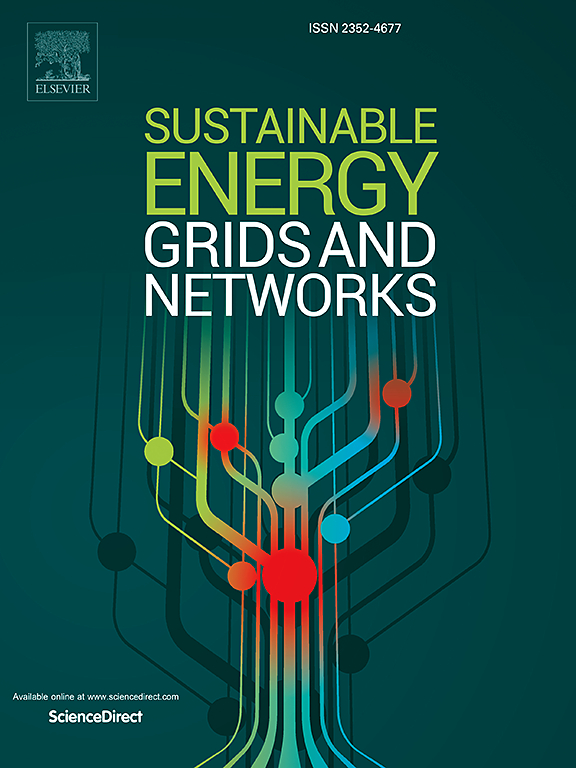数据驱动的主动配电系统净负荷隐性太阳能光伏和储能容量估计
IF 5.6
2区 工程技术
Q2 ENERGY & FUELS
引用次数: 0
摘要
分布式能源(DER)的扩散,特别是太阳能光伏(PV)系统,给管理主动分配系统带来了挑战。由于电网运营商安装在电表后,他们往往对光伏发电缺乏可视性。准确的净负荷预测是保证电网稳定性和可靠性的关键,需要同时考虑负荷需求和DG输出。这项研究提出了一种数据驱动的方法来解决这些挑战。提出了一种估算分布式发电系统(包括光伏和储能系统)容量的新方法。在此基础上,设计了一种基于强化学习的ESS控制策略,使光伏电池集成系统的经济效益最大化。提出了一种基于深度学习的长短期记忆和门控循环单元的净负荷预测模型。最后,为了提高模型性能和降低计算复杂度,采用Shapley值技术实现特征选择。仿真结果表明,该方法在光伏和ESS容量估计中的绝对百分比误差分别为4.72 %和47.87 %。所提出的充电策略使光伏电池集成系统的年平均收益提高了1304 THB/kWp。此外,采用该策略,每年的ESS利用率平均降低了2.91 %。本文章由计算机程序翻译,如有差异,请以英文原文为准。
Data-driven hidden solar PV and energy storage capacity estimation from the net-load of active distribution systems
The proliferation of distributed energy resources (DER), particularly solar photovoltaic (PV) systems, has introduced challenges in managing active distribution systems. Due to their behind-the-meter installation, network operators often lack visibility in PV generation. Accurate net-load forecasting, which considers both load demand and DG output, is essential for ensuring grid stability and reliability. This research presents a data-driven approach to address these challenges. A novel method is proposed for estimating the capacity of DER, including PV and energy storage systems (ESS). Furthermore, a reinforcement learning-based ESS control strategy is devised to maximize the economic benefits of PV-battery integrated systems. A deep learning-based long short-term memory and Gated Recurrent Unit model is developed for net-load forecasting. Finally, to enhance model performance and reduce computational complexity, feature selection is implemented using the Shapley value technique. Simulation results demonstrate that the proposed approach achieves absolute percentage errors of 4.72 % and 47.87 % in PV and ESS capacity estimation, respectively. The proposed charging strategy increases the annual return of the PV-battery integrated system by an average of 1304 THB/kWp. Additionally, annual ESS utilization is reduced by an average of 2.91 % with the proposed strategy.
求助全文
通过发布文献求助,成功后即可免费获取论文全文。
去求助
来源期刊

Sustainable Energy Grids & Networks
Energy-Energy Engineering and Power Technology
CiteScore
7.90
自引率
13.00%
发文量
206
审稿时长
49 days
期刊介绍:
Sustainable Energy, Grids and Networks (SEGAN)is an international peer-reviewed publication for theoretical and applied research dealing with energy, information grids and power networks, including smart grids from super to micro grid scales. SEGAN welcomes papers describing fundamental advances in mathematical, statistical or computational methods with application to power and energy systems, as well as papers on applications, computation and modeling in the areas of electrical and energy systems with coupled information and communication technologies.
 求助内容:
求助内容: 应助结果提醒方式:
应助结果提醒方式:


